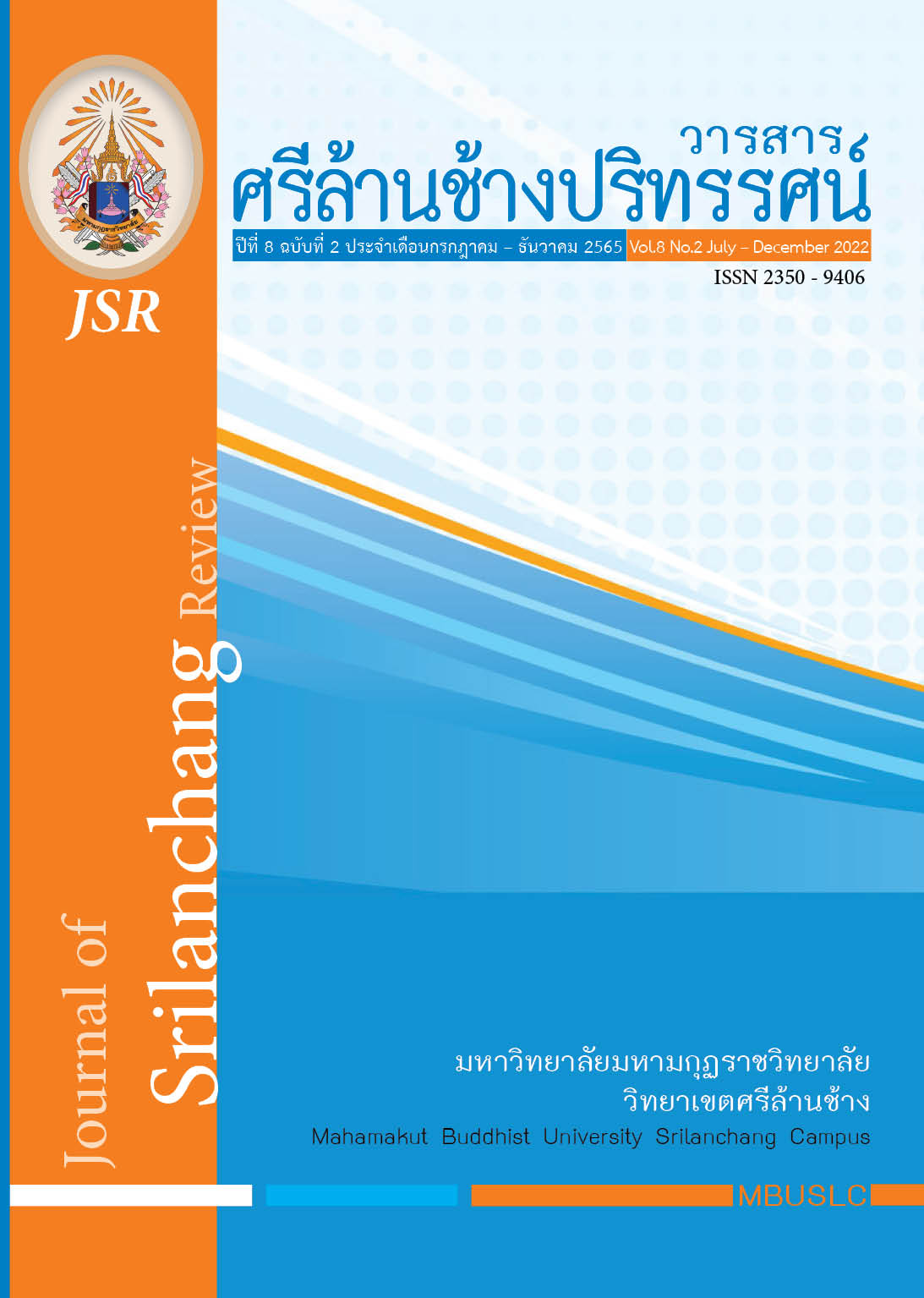ADDIE MODEL-BASED DEVELOPMENT OF DIGITAL MEDIA ON WORLD REGIONS AND HISTORICAL DEVELOPMENT FOR MATHAYOMSUKSA 3 STUDENTS
Main Article Content
Abstract
The objectives of the research were to: 1) develop the digital media on World Regions and Historical Development, based on the ADDIE Model, for Mathayomsuksa 3 students, and 2) to compare the students’ achievement before and after learning. The study was engaged in the one- group pretest-posttest design. The target group comprised twenty Mathayomsuksa 3 novices, Srijan Wittaya School, Loei province. The instruments used for data collection consisted of lesson plan on World Regions and Historical Development, digital media on World Regions and Historical Development, Assessment of Digital Media Quality, and Achievement Tests, including the pretest and the posttest. The statistics used for data analysis comprised of arithmetic mean, standard deviation, and the t-test for dependent samples.
The research result finds that:
- The result of digital media development, based on 5-stage ADDIE Model, was distributed to five fifty-minutes lessons, each of which consisted of achievement tests. The presented digital media comprised the content in the formations of messages, graphics, audios, videos and images. The validity of the research instruments was examined by the experts with the index of item-objective congruence (IOC) of 0.80-1.00. The evaluation of developed digital media by the expert was found to be at a high level (
= 4.02, S.D. = 0.26), and the efficiency of digital media was equal to 81.67/92.67, higher than the standard criteria of 80/80.
- The comparison of the learner’s achievement before and after ADDIE-model-based learning of digital media on World Regions and Historical Development for Mahayomsuksa 3 students revealed that the novices’ achievement after learning was found to be higher than before learning at a statistically significant level of 0.05.
Article Details

This work is licensed under a Creative Commons Attribution-NonCommercial-NoDerivatives 4.0 International License.
บทความที่ได้รับการพิจารณาจากคณะกรรมการผู้ทรงคุณวุฒิและเผยแผ่ในวารสารฉบับนี้ เป็นทัศนคติและข้อคิดเห็นส่วนบุคคลของผู้เขียนแต่ละท่าน ไม่ถือว่าเป็นทัศนะคติและความรับผิดชอบ
ของบรรณาธิการ
บทความ ข้อมูล เนื้อหา รูปภาพ ฯลฯ ที่ได้รับการตีพิมพ์ในวารสารศรีล้านช้างปริทรรศน์ ถือเป็นลิขสิทธิ์ของวารสารศรีล้านช้างปริทรรศน์ หากบุคคลหรือหน่วยงานใดต้องการนำทั้งหมดหรือส่วนหนึ่งส่วนใดไปเผยแพร่ต่อหรือเพื่อกระทำการใด ๆ จะต้องได้รับอนุญาตเป็นลายลักอักษรจากวารสารศรีล้านช้างปริทรรศน์ ก่อนเท่านั้น
References
เกียรติศักดิ์ ล้วนมงคล และวุฒิภา สว่างสุข. (2562). การพัฒนาสื่อเรียนรู้ดิจิทัลเพื่อส่งเสริมทักษะการวาดภาพจิตรกรรมไทย. วารสารมนุษยสังคมปริทัศน์ (มสป.). 21(1). (มกราคม-มิถุนายน 2562). 19-21.
จรินทร อุ่มไกร และ ไกยสิทธิ์ อภิระติง. (2562). การพัฒนาสื่อดิจิทัลร่วมกับเทคโนโลยีความจริงเสริม โดยอาศัยการเรียนรู้แบบร่วมมือด้วยเทคนิค STAD ในรายวิชาคอมพิวเตอร์ ชั้นประถมศึกษาปีที่ 6. วารสารโครงงานวิทยาการคอมพิวเตอร์และเทคโนโลยีสารสนเทศ. 5(2). (กรกฏาคม-ธันวาคม 2562). 25.
ใจทิพย์ ณ สงขลา. (2561). การออกแบบการเรียนแนวดิจิทัล. กรุงเทพ ฯ: โรงพิมพ์แห่งจุฬาลงกรณ์ มหาวิทยาลัย.
เตชินี ภิรมย์. (2560). ศึกษาและพัฒนาบทเรียนออนไลน์ด้วยโปรแกรม Moodle เพื่อส่งเสริมการจัดกิจกรรม การเรียนรู้สู่ศตวรรษที่ 21กรณีศึกษา : โรงเรียนปลายพระยาวิทยาคม จ.กระบี่. กระบี่: สำนักงานเขตพื้นที่การศึกษามัธยมศึกษา เขต 13.
ธานินทร์ อินทรวิเศษ และคณะ. (2562). เทคโนโลยีและนวัตกรรมกับการจัดการเรียนการสอนในยุคดิจิทัล. Humanities, Social Sciences and arts. 12(6). (November-December 2019). 480-481.
วิจารณ์ พานิช. (2555). วิถีสร้างการเรียนรู้เพื่อศิษย์ในศตวรรษที่ 21. กรุงเทพ ฯ: มูลนิธิสดศรีสฤษดิ์วงศ์.
NT digital solution. (2563). เทคโนโลยีจำเป็นกับการศึกษาไทยจริงหรือ. ออนไลน์. สืบค้นเมื่อ 20 ธันวาคม 2564, แหล่งสืบค้น https://www.catebusiness.com/Newsactivity/Detail/H00046.
สุภาณี เส็งศรี. (2561). วิธีวิทยาการสอนคอมพิวเตอร์ : สาระเทคโนโลยีสารสนเทศและการสื่อสารสาระเทคโนโลยี (ฉบับปรับปรุง พ.ศ. 2560). พิษณุโลก : คณะศึกษาศาสตร์ มหาวิทยาลัยนเรศวร.


